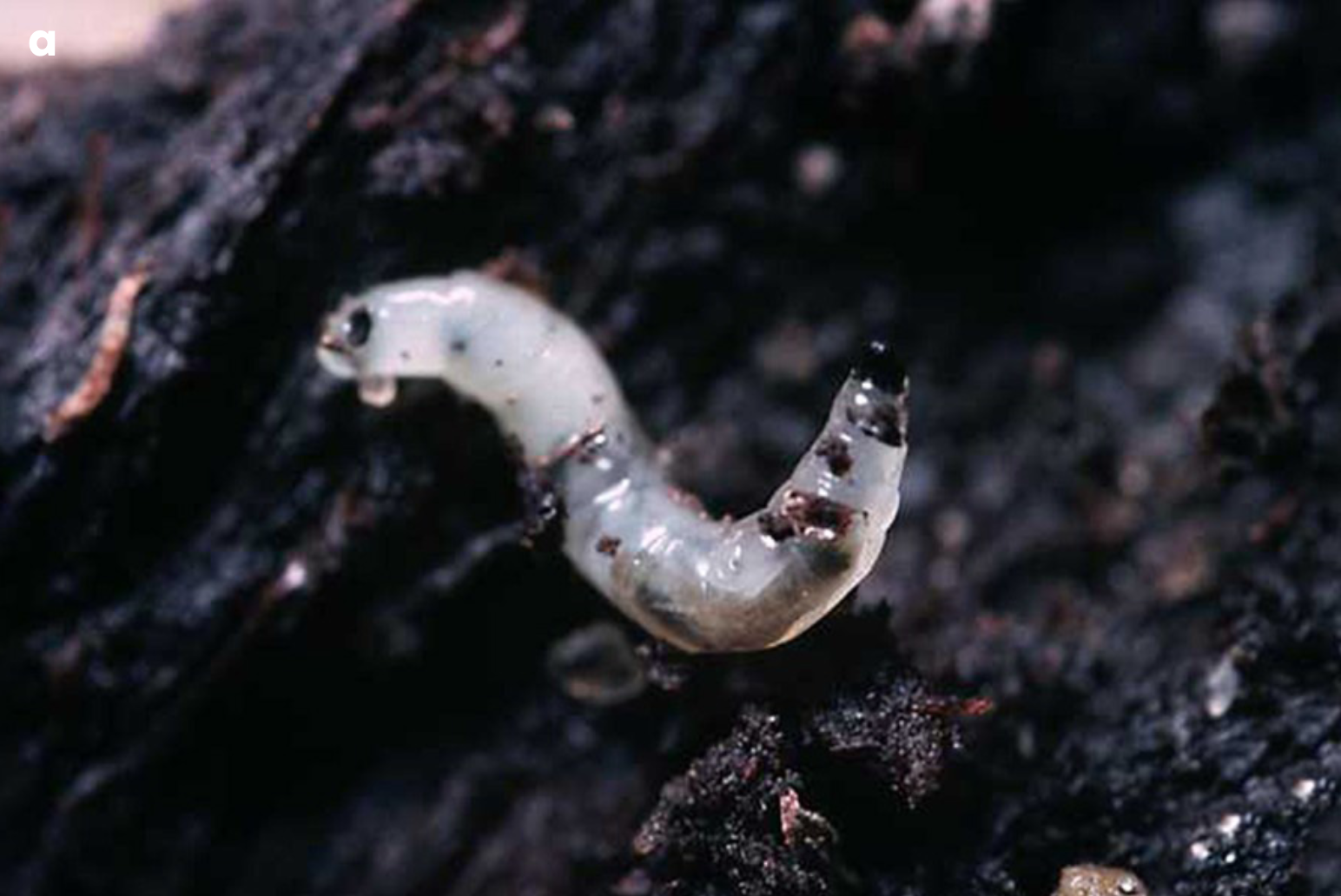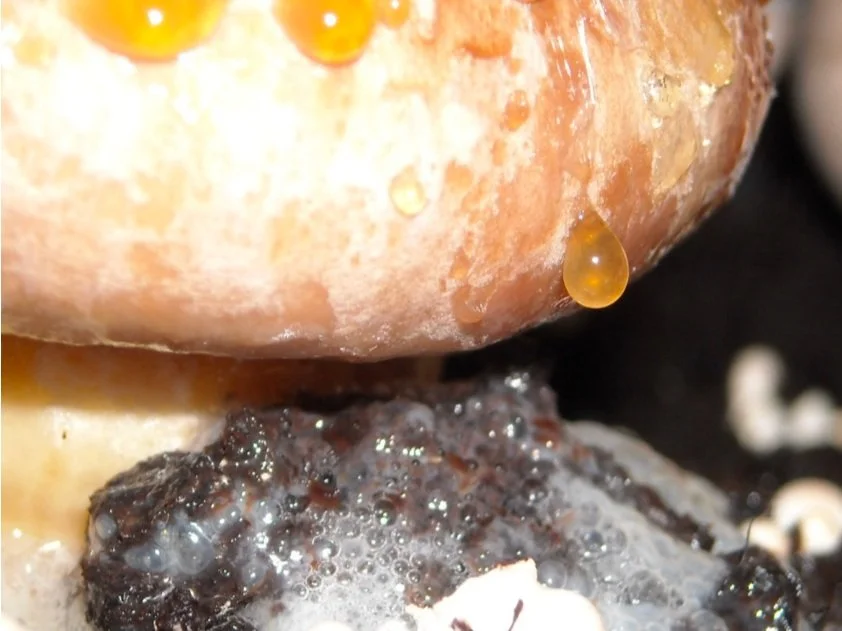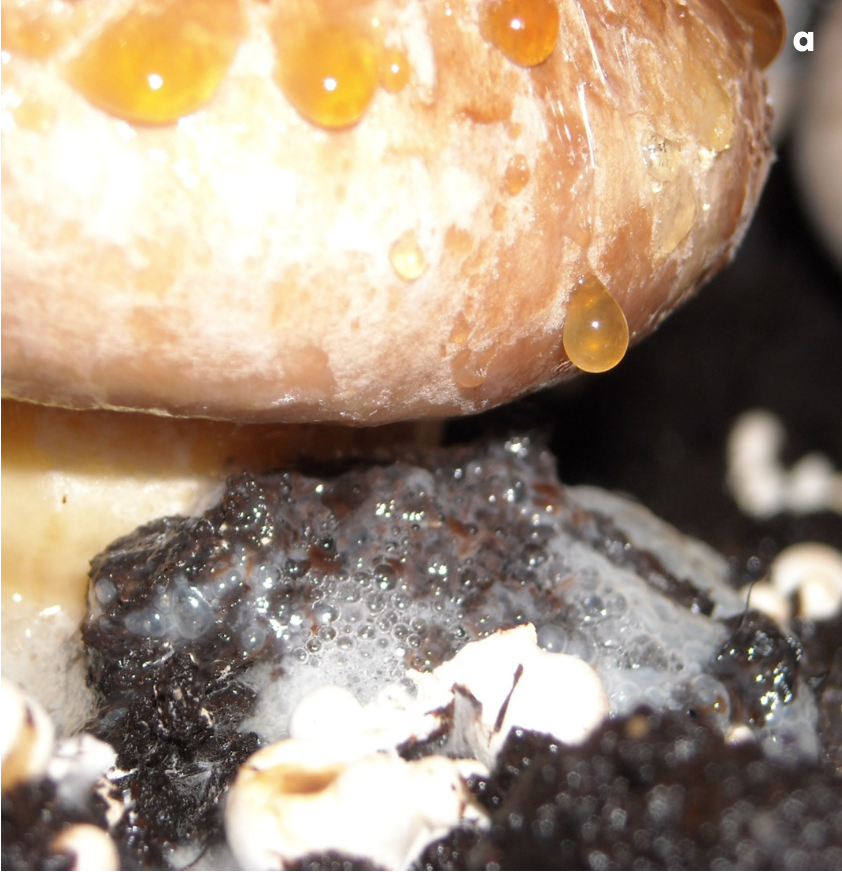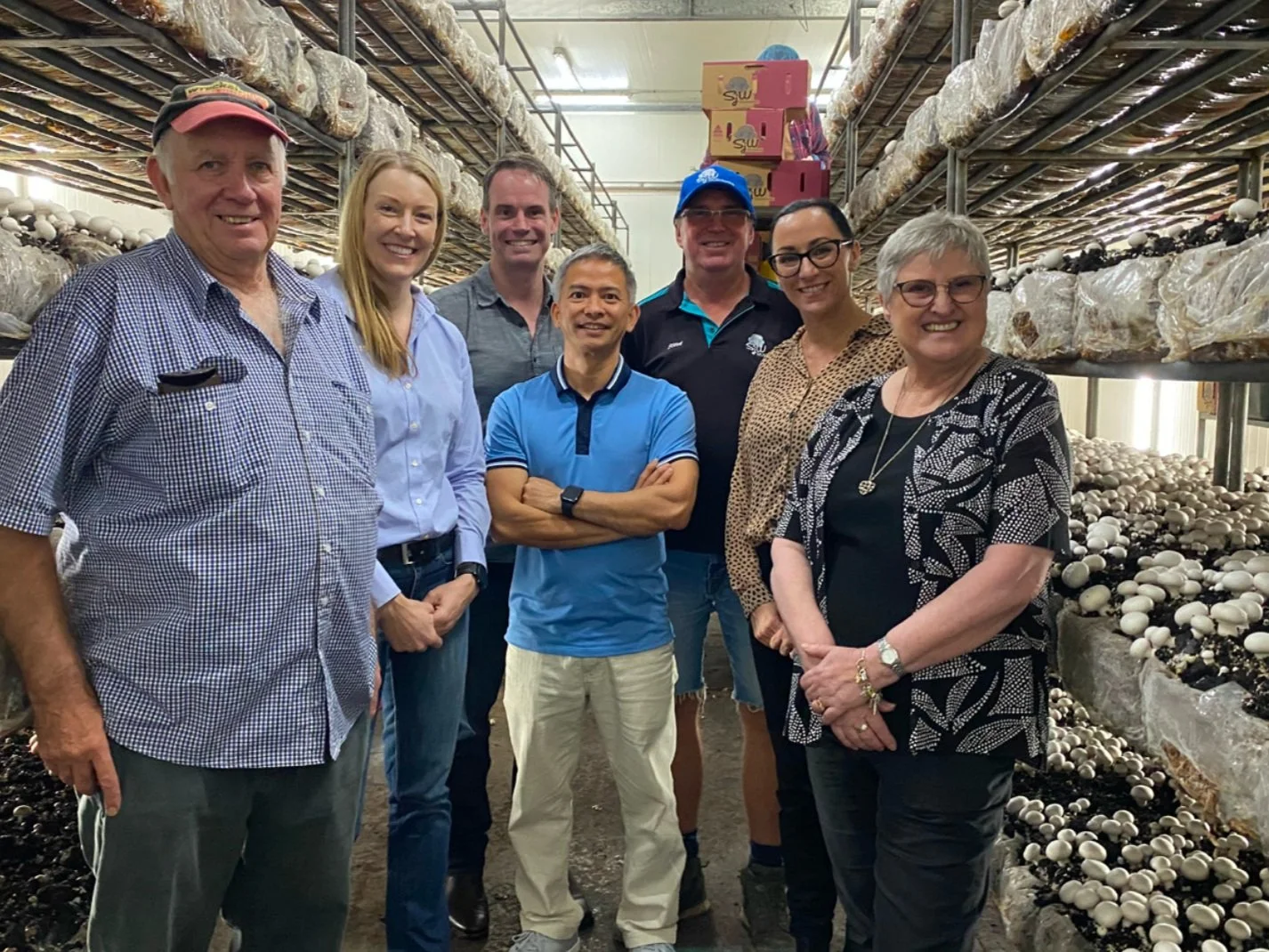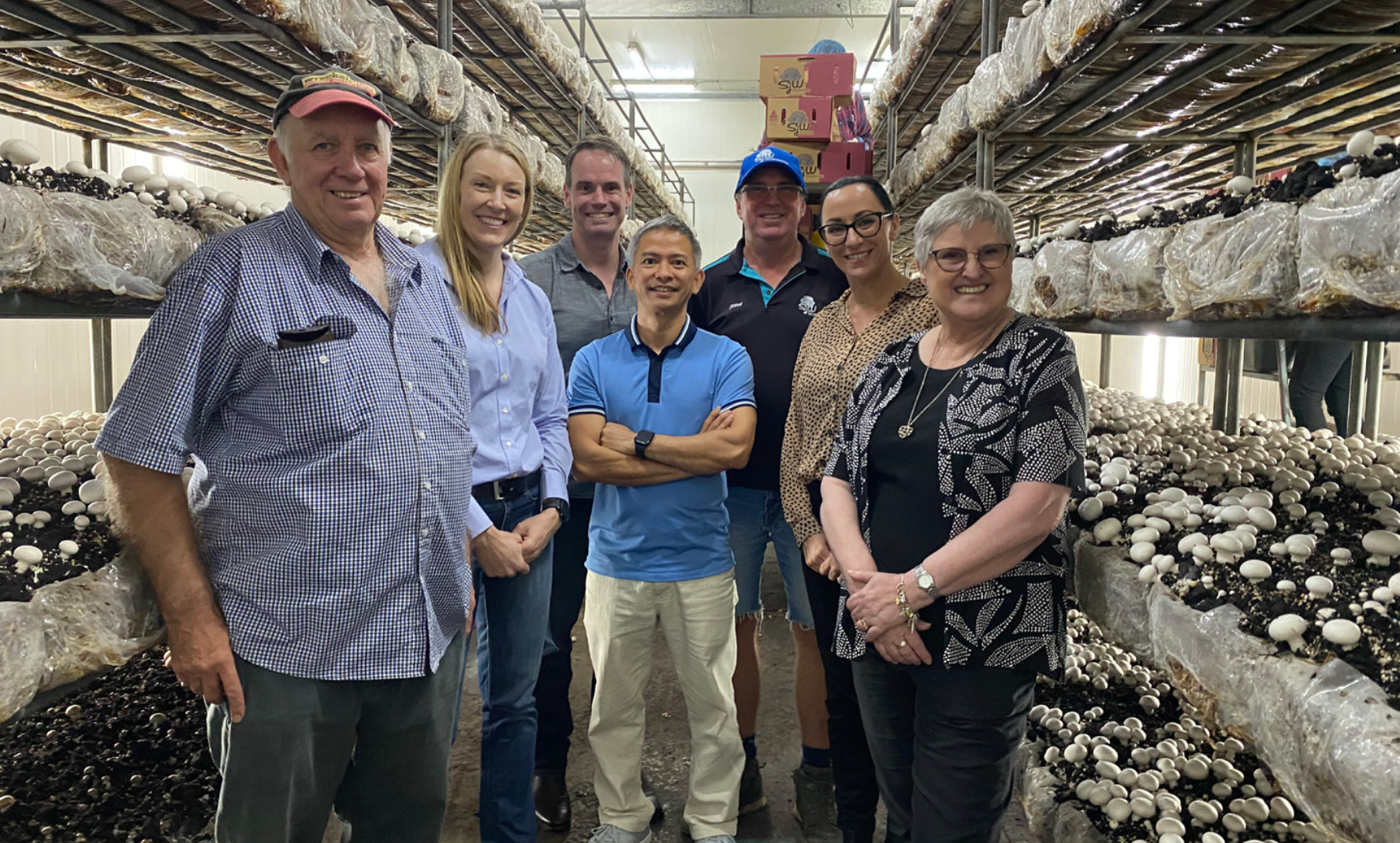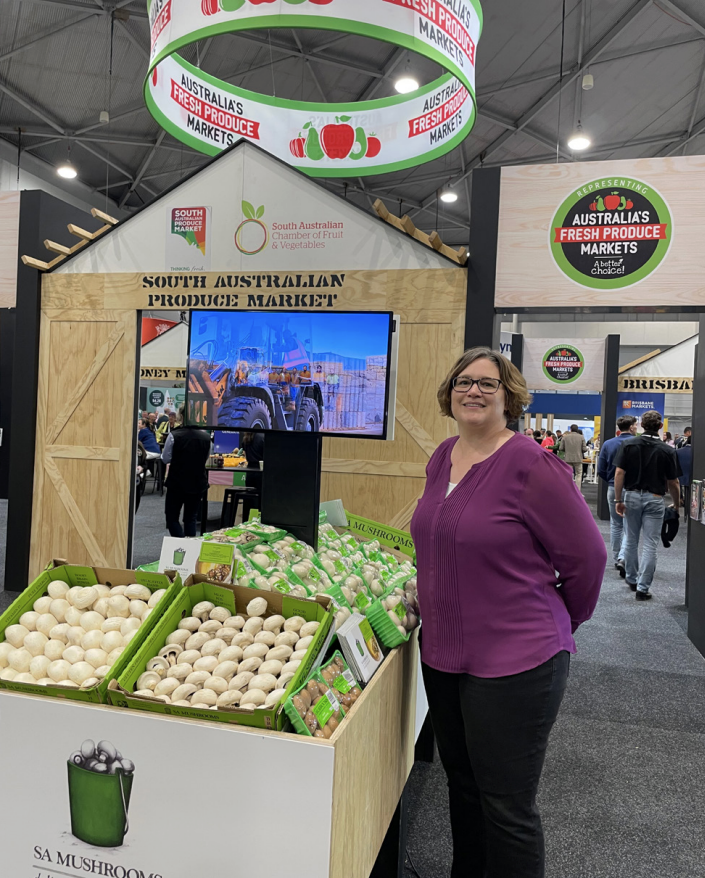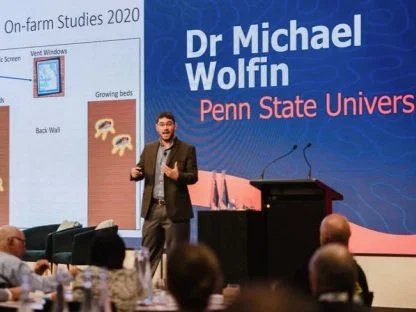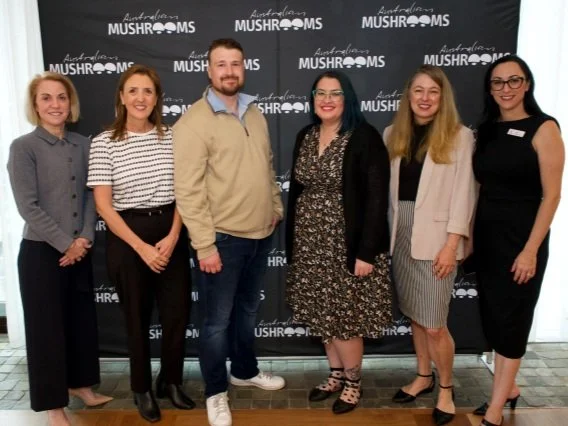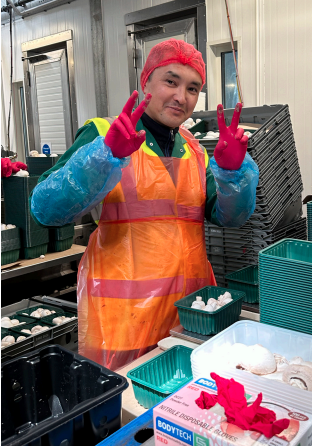MushroomLink Magazine Issue 13
We hope you enjoy this issue, with its usual mix of R&D news, the latest in technology from around the world, and pest and disease updates.
You can subscribe to an e-copy of MushroomLink magazine here or view previous issues here
Click here to download the magazine
Articles
Levy funded project updates
Microbes 101: Understanding human pathogens (and how we find them)
The Mushroom Health Science Australia Website: A strong start
Marketing
Growing & Tech
Pest & Diseases
Biological control of pests and diseases - A review of products potentially useful for mushrooms
At some point, every grower will encounter pests and/or diseases, no matter how good their crop hygiene and farm biosecurity. These can potentially wreak havoc across not just a single crop, but the whole farm. With chemical control availability dwindling, Dr Aimee McKinnon (Agriculture Victoria) has been examining more sustainable alternatives through Hort Innovation project MU22000.
Disorder or disease?
When mushroom growers detect an unusual symptom on their crop, their first response is to determine whether the issue is a disorder or a disease — a critical step for effective management and to maintain farm biosecurity.
Ethylene and mushroom quality - MU24002 kicks off!
An eighteen month project is underway at the Queensland Department of Primary Industries’ (QDPI) well-equipped Maroochy Research Facility (MRF) on the Sunshine Coast (Qld), aiming to determine whether ethylene exposure along the supply chain is affecting mushroom quality.
Verification of farm hygiene efficacy by paint roller sampling
Whole-farm hygiene is a critical component in mitigating the costly impact of pests and diseases on mushroom quality and yield. Hygiene forms a critical core pillar of an effective farm Integrated Pest and Disease Management (IPDM) program, and enforcing strict preventative hygiene protocols is the most cost-effective disease management strategy available in the mushroom growers’ toolbox.
Using an innovative approach, Warwick and Judy adopted standard paint rollers as sampling tools and verified their applicability by direct plating to ‘up-sized’ culture dishes – replacing standard 9cm-diameter Petri dishes – that could accommodate the length of various paint rollers (Gill & Allan 2016). Paint rollers offer wide and rapid coverage, ease of use, good spore pickup from all surfaces, cost-effectiveness and compatibility with modern diagnostic tools—making them well-suited for mushroom farm pathogen detection.
The Mushroom Health Science Australia Website is live: A strong start to a high impact initiative
The Mushroom Health Science Australia website, which you can find at www.mushroomhealthscienceaustralia.org is now live and making meaningful connections with health professionals across Australia. This levy-funded flagship initiative is designed to showcase the research, resources and recipes linking mushroom consumption with health outcomes.
The website has had a strong and promising start, delivering value to both the healthcare and mushroom industries.
Margin’s Mushrooms - From fizz to fungi, a grower’s journey
In a world increasingly dominated by ‘Big Players’, whether you are running sport, selling chemicals or growing mushrooms, it is refreshing to find a small family business that is not only surviving, but thriving. MushroomLink recently had the pleasure of visiting Margin’s Mushrooms on the beautiful NSW Central Coast, spending time with dynamic owners Kim and Christine Margin.
Marketing update
With an emphasis on taste, versatility, and everyday appeal, the initial campaign results are encouraging across a broad mix of paid, owned and earned media.
The Australian mushroom industry continues to see positive momentum through the national Mmmmushrooms campaign, developed by Hort Innovation and supported by the Mushroom Fund.
As of May 2025, the campaign is tracking well against its performance objectives and laying the groundwork for sustained consumer engagement and behavioural change
Microbes 101
Cast your memory back to March this year, and you may remember some empty shelves in the supermarket fresh produce section, especially if you were in Queensland or northern NSW. This was due to a major recall of products containing baby spinach.
The recall was triggered by two detections of shiga- toxin E. coli (STEC) in ready-to-eat spinach products. No illnesses were linked to the detection, so there was little media interest.
However, those two detections cost the industry dearly, with losses likely to be in the millions of dollars. These losses extended to completely unrelated growers; with supply stopped for two weeks, many crops were simply abandoned.
So, what is STEC? Was such a recall justified? And what is the risk of something similar happening in our industry?
The mushroom RD&E investment cycle
In the final instalment, Mushroom Fund Research, Development and Extension Coordinator (RDEC) Dr Carly Rosewarne explains how projects are managed after contracting.
Transforming ideas into contracted projects takes considerable effort, as outlined in Parts 1 and 2 of this series.
The hard work does not stop there – in fact, it is just getting started! One of the first tasks for Delivery Partners – the teams that have been contracted to achieve the outcomes – is to prepare their project planning paperwork. This includes a risk management plan, stakeholder engagement plan, communications plan, and a monitoring and evaluation plan.
Mushroom Schools Education Program
In a MushroomLink first, we’re excited to welcome AMGA CEO Leah Bramich for an engaging webinar where she’ll introduce the newly launched Mushroom Schools Education Program.
Designed to spark curiosity and encourage healthy eating habits in young Australians, the program features a fun new look and the introduction of the Mushroom Family characters - making mushroom education more accessible and engaging for early learners.
Learn about the program’s goals, how early education can shift perceptions about food, and why winning over our littlest consumers can have a lasting impact on mushroom consumption.
About Leah Bramich
Leah Bramich needs no introduction to Australian mushroom growers. She has been at the AMGA since 2019 and led the association for the past three years with energy and vision.
But what many may not know is Leah’s deep passion for education, particularly when it comes to inspiring young children. The Mushroom Schools Education Program is a project close to Leah’s heart.
Conceived and championed by her from the very beginning, the program has grown through multiple iterations, shaped by Leah’s determination to find what truly resonates with young learners. Her commitment to making mushrooms fun, familiar, and accessible for the next generation is evident in every detail of the new look, tone, and characters.
The fly doctor is flying in
The AMGA is pleased to announce that Dr Michael Wolfin will be visiting Australia in March 2025. Dr Wolfin is an Assistant Research Professor in the Entomology Department at Pennsylvania State University and has been a member of the Mushroom Fly Research Team since 2017.
His research has led to the development of attract and kill stations to control mushroom fly populations on mushroom farms. He studies the behaviour and chemical ecology of mushroom flies and works to apply this research to develop or improve pest management strategies.
STRONGER TOGETHER Recap of the 2024 AU + NZ Mushroom Growers Conference
The 45th AMGA Conference in Tāmaki Makaurau Aotearoa/Auckland New Zealand marked the first conference collaboration between the Australian Mushroom Growers Association and the New Zealand Commercial Mushroom Growers Federation. In October, over 150 delegates, representing all parts of the mushroom industry from around the world, met to network and learn.
Transforming food service with Australian Mushrooms
The results of the AMGA's three-year project MU20003: Educating the food industry, show the truly positive impact Australian Mushrooms can have on the overall health of Australians. With the potential of Vitamin D mushrooms to triple Vitamin D intake of residents in aged care, mushrooms can address this widespread deficiency while catering to most dietary preferences.
Further, with the rise of plantbased trends and flexitarian diets, research also shows substantial potential for the entire food service industry to adopt more mushrooms on menus to improve health outcomes.
Safe Mushroom
Growing high-quality fresh mushrooms that are safe to eat is the responsibility of everyone who works on farm.
The SAFE MUSHROOM Program provides food safety and risk management resources and training, enabling all mushroom supply chain businesses and their staff to adopt best practice.
MushroomLink Bulletin June 2025
In this edition:
FEATURE: Managing phorid flies
WEBINAR: Mushrooms in schools program
VIDEO: Training the next generation at the MLMRU
PODCAST: Mushrooms Health Science website with Emma Becket (from the archive)
MARKETING: Welcome to our new regular column, 5 minutes with marketing
OTHER NEWS: Latest from Hort Innovation
MushroomLink Bulletin May 2025
In this edition:
FEATURE: Express testing for Trichoderma - new international research
MUSHROOM R&D SIAP: Meet the members
LOOKING BACK: The Marsh Lawson Mushroom Research Unit
WEBINAR: Revisit the thinking behind the new mushroom marketing strategy
LEVY PROJECT SUMMARY: People development strategy
SCHOLARSHIP: Mushroom Fund international study tour
Education and research at the MLMRU
The Marsh Lawson Mushroom Research Unit (MLMRU) and its activities are funded through the Hort Innovation Project Marsh Lawson Mushroom Research Centre of Excellence (MU21004). The unit is co-owned by the Australian Mushroom Growers Association (AMGA) and The University of Sydney. Applied Horticultural Research assists with managing the unit.
Based at The University of Sydney, the MLMRU plays an important role in teaching horticulture students about mushroom production and research and providing a space for Honours, Masters and PhD students to conduct research. This video covers some of the work done by Dr Meghann Thai in educating university students about mushrooms and the work done in the unit by PhD candidate Samali Perera.
Want to learn more about the MLMRU?
Final report summary: People development strategy for the Australian mushroom industry(MU23005)
The Australian mushroom industry faces challenges in attracting, developing, and retaining skilled workers. In response, this project, funded by Hort Innovation and conducted by RMCG, aimed to develop a strategy to address workforce shortages and build long-term capability.
The strategy aligns with the Mushroom Strategic Investment Plan (SIP) 2022–2026, which prioritises extension, capability building, and industry leadership.




